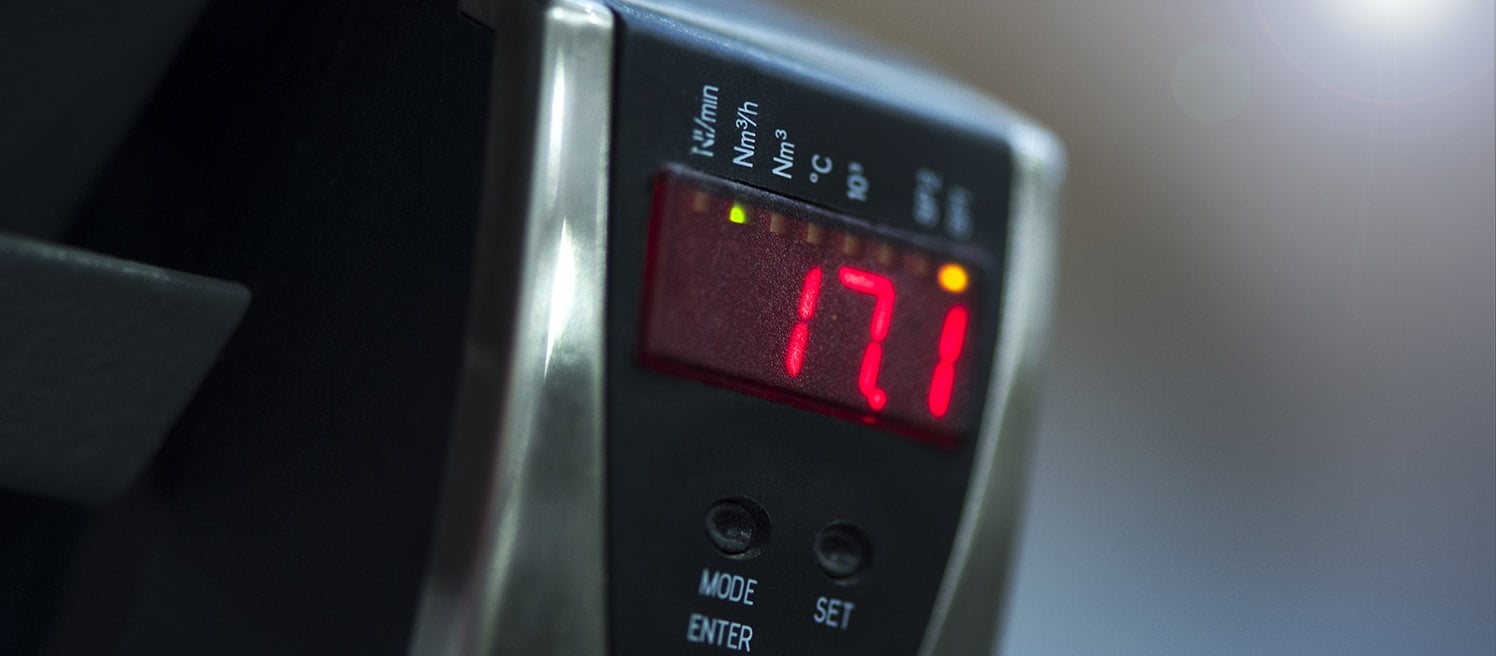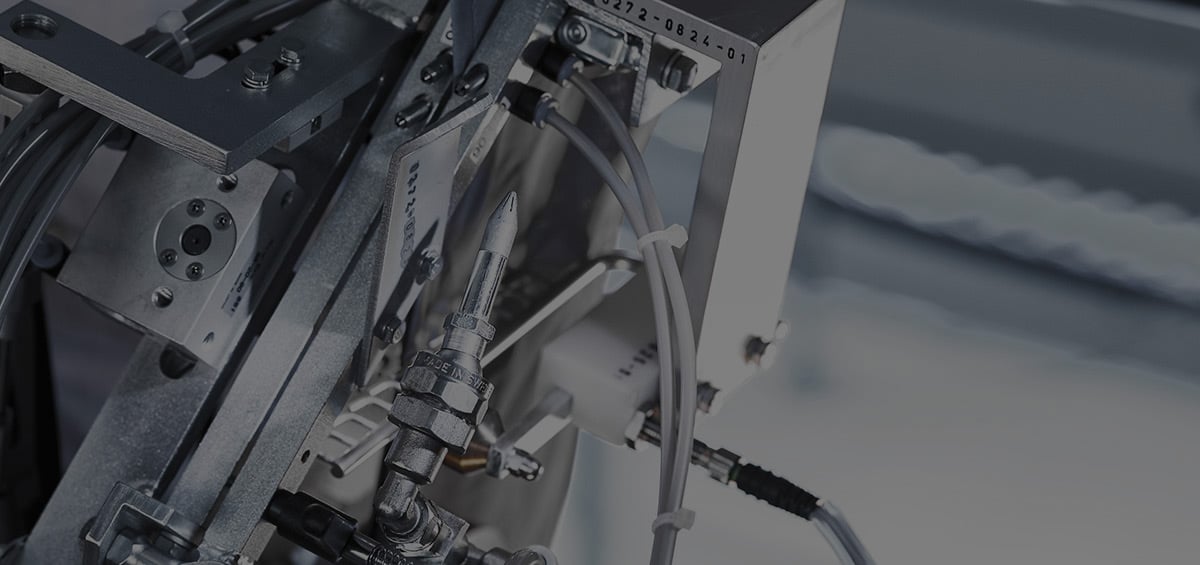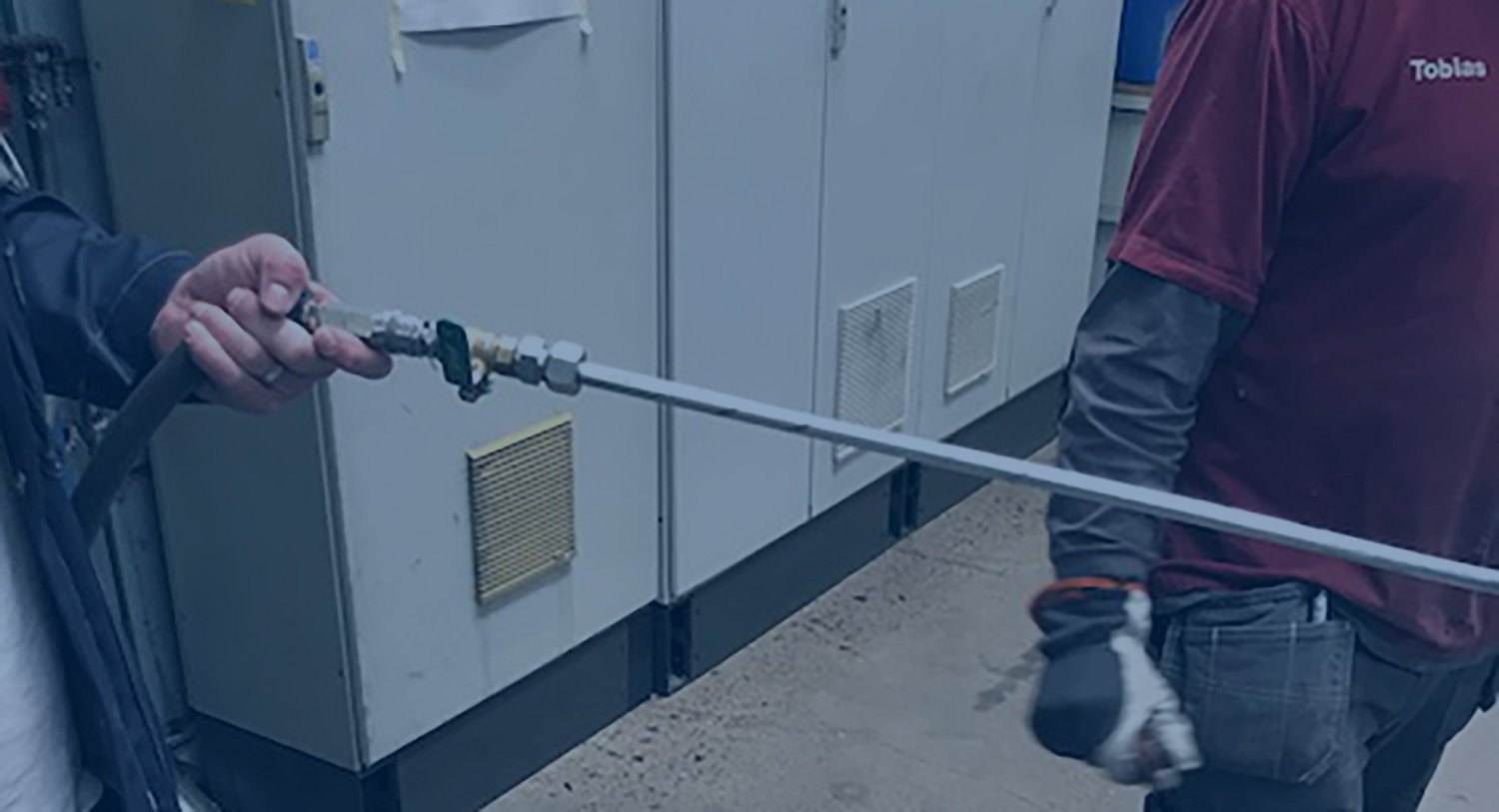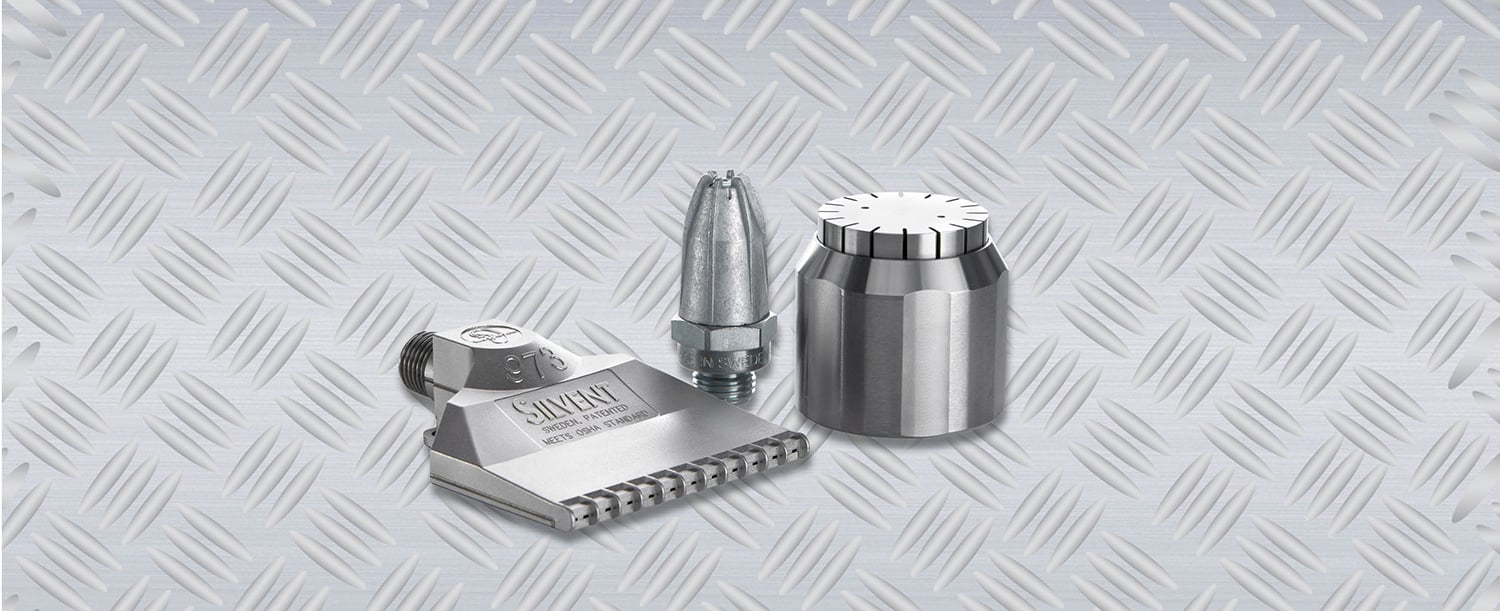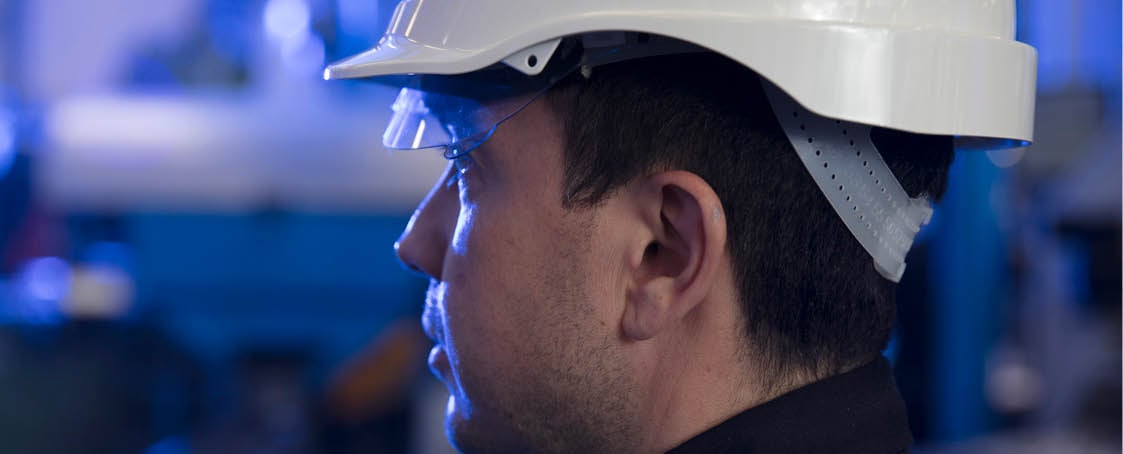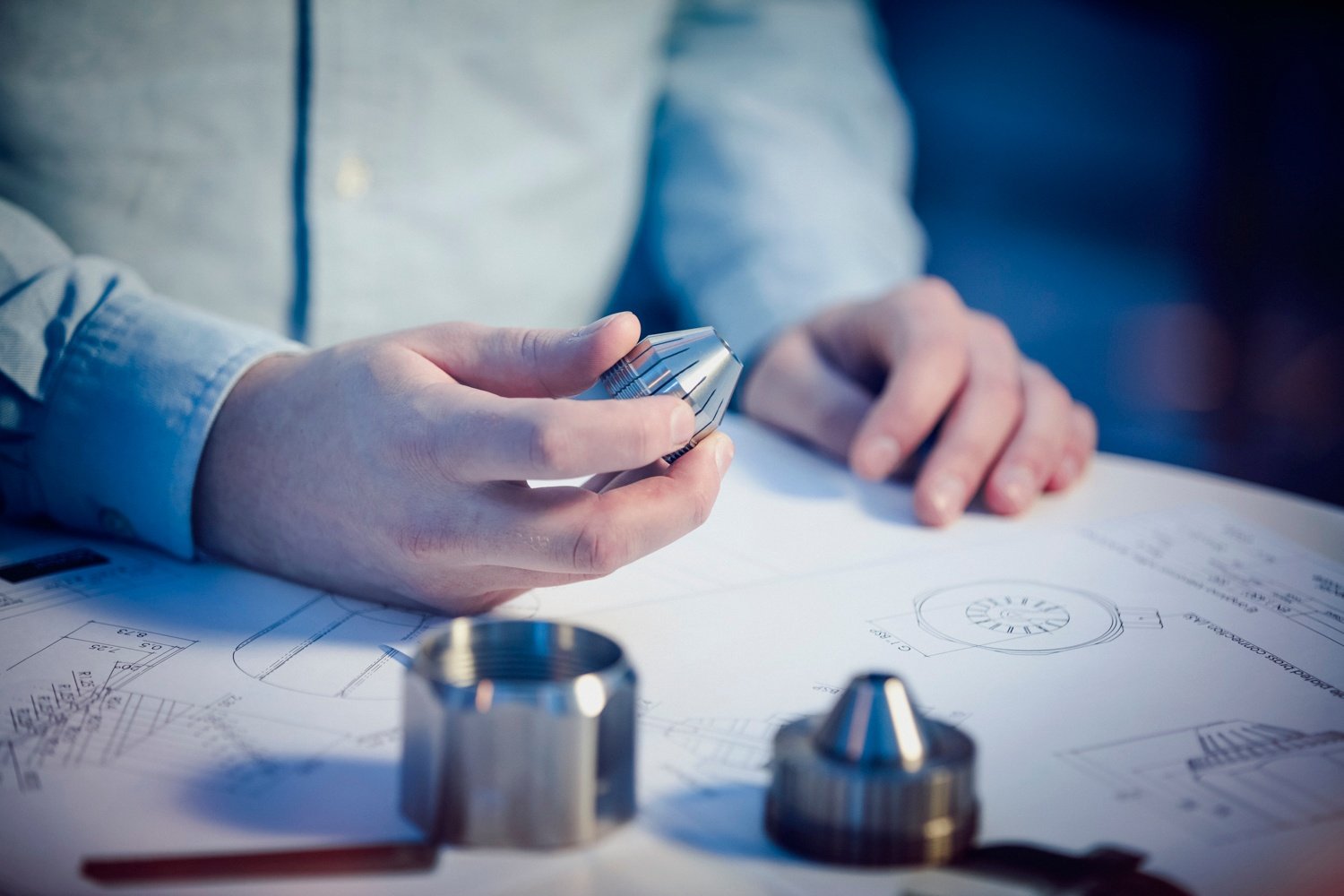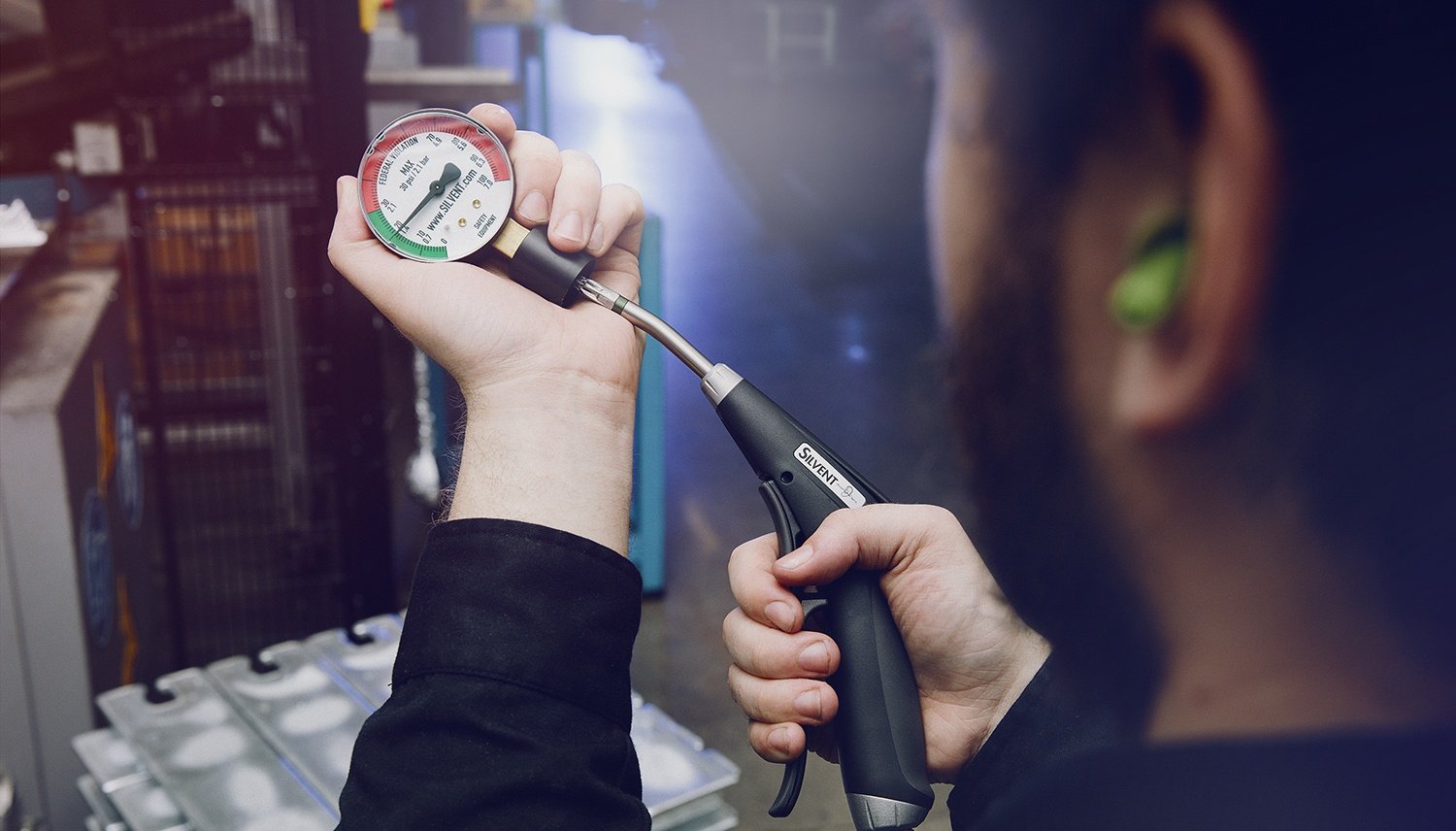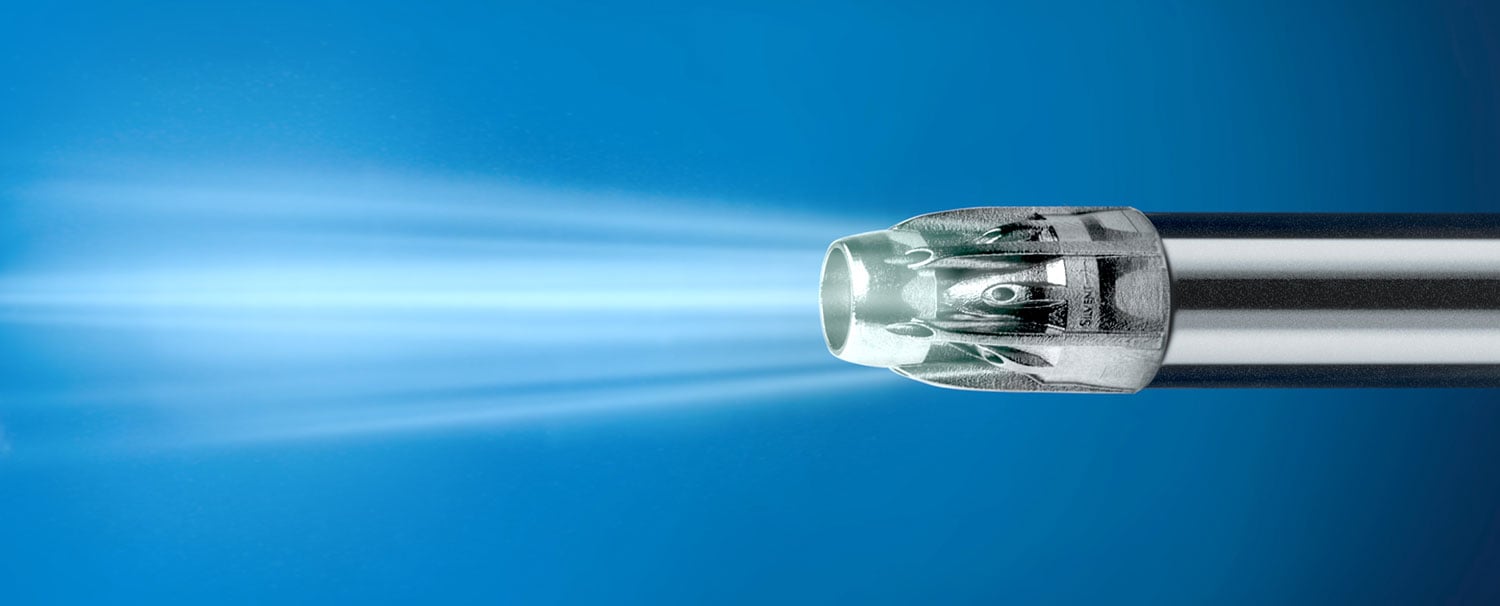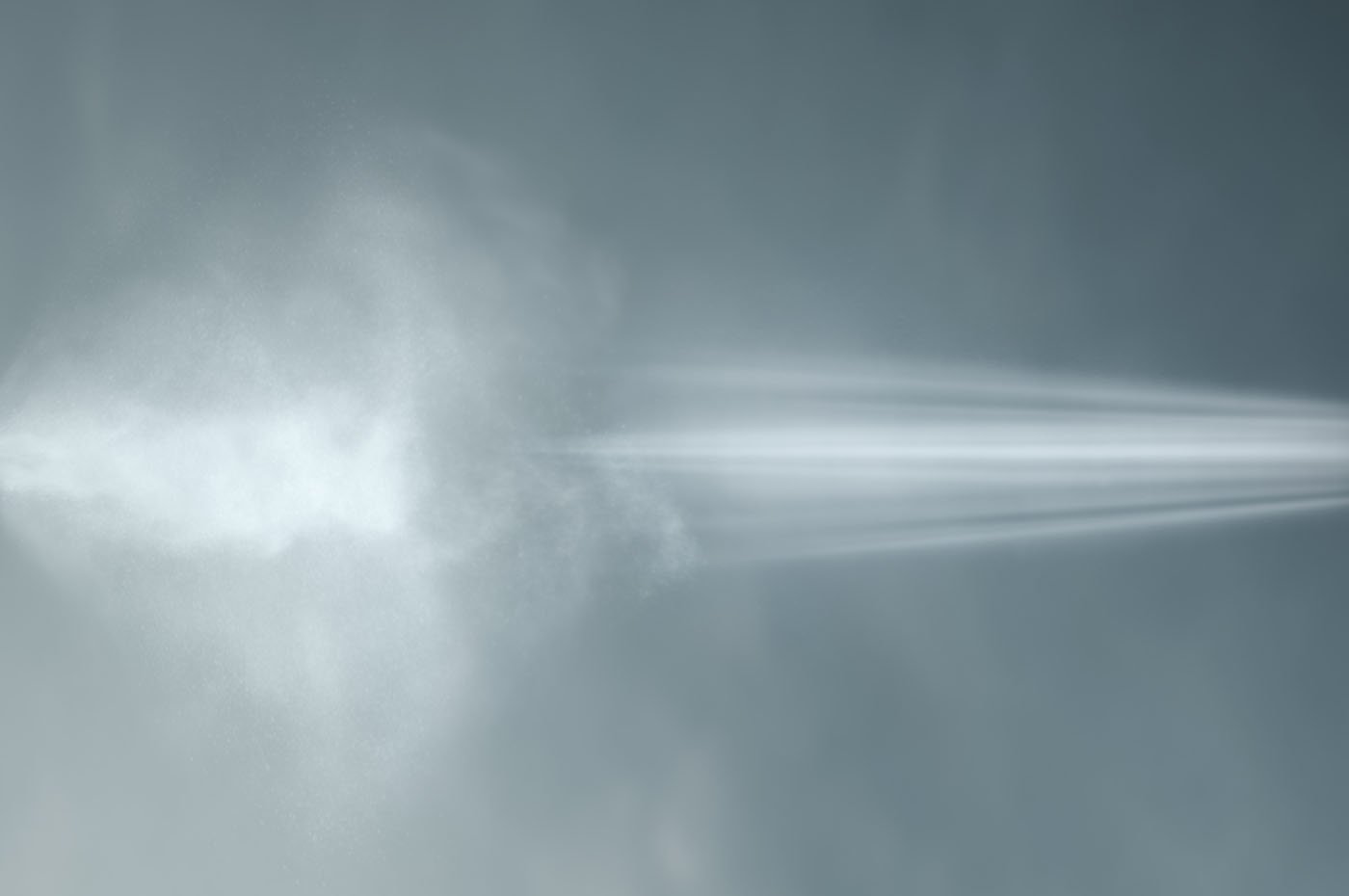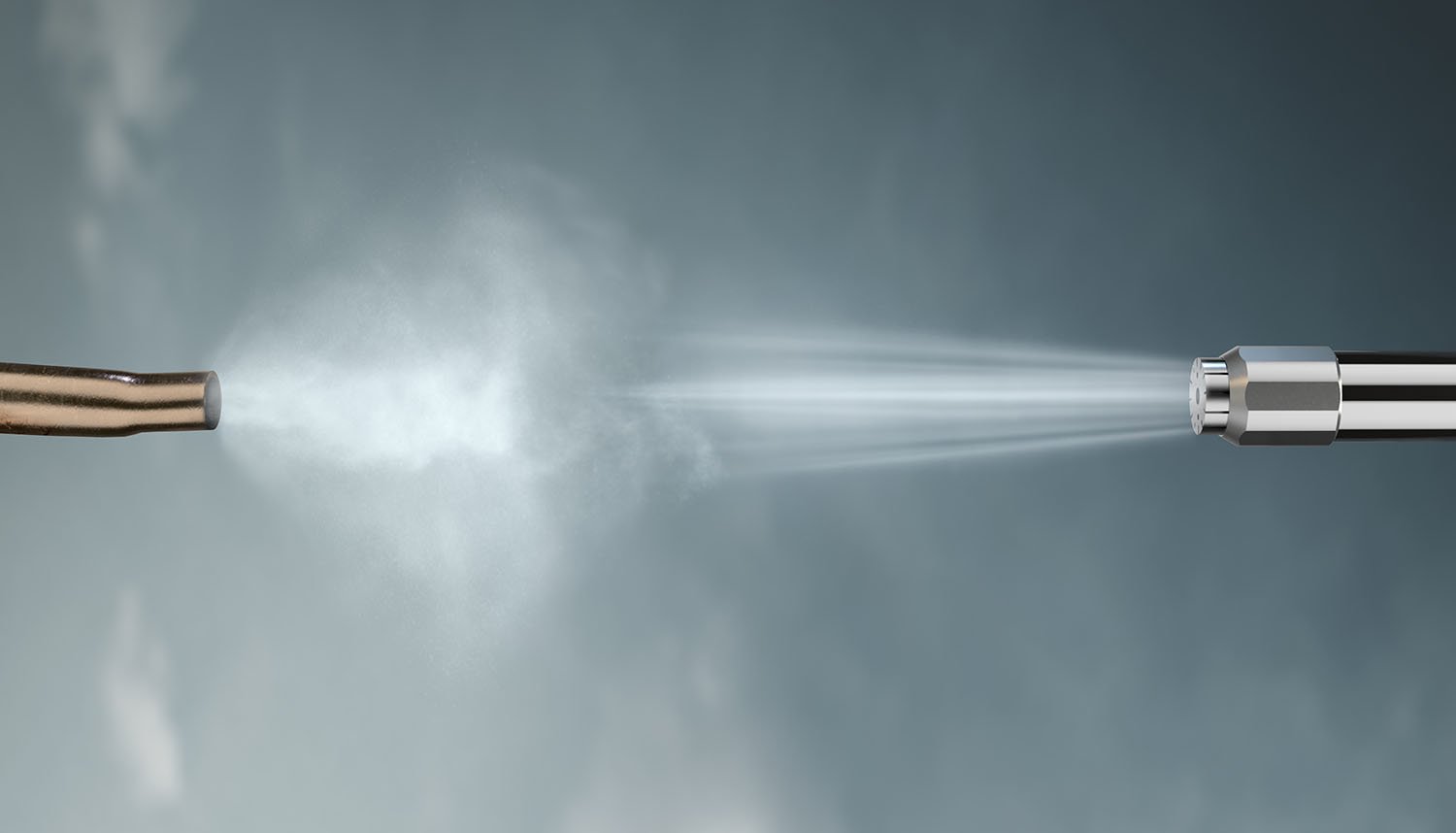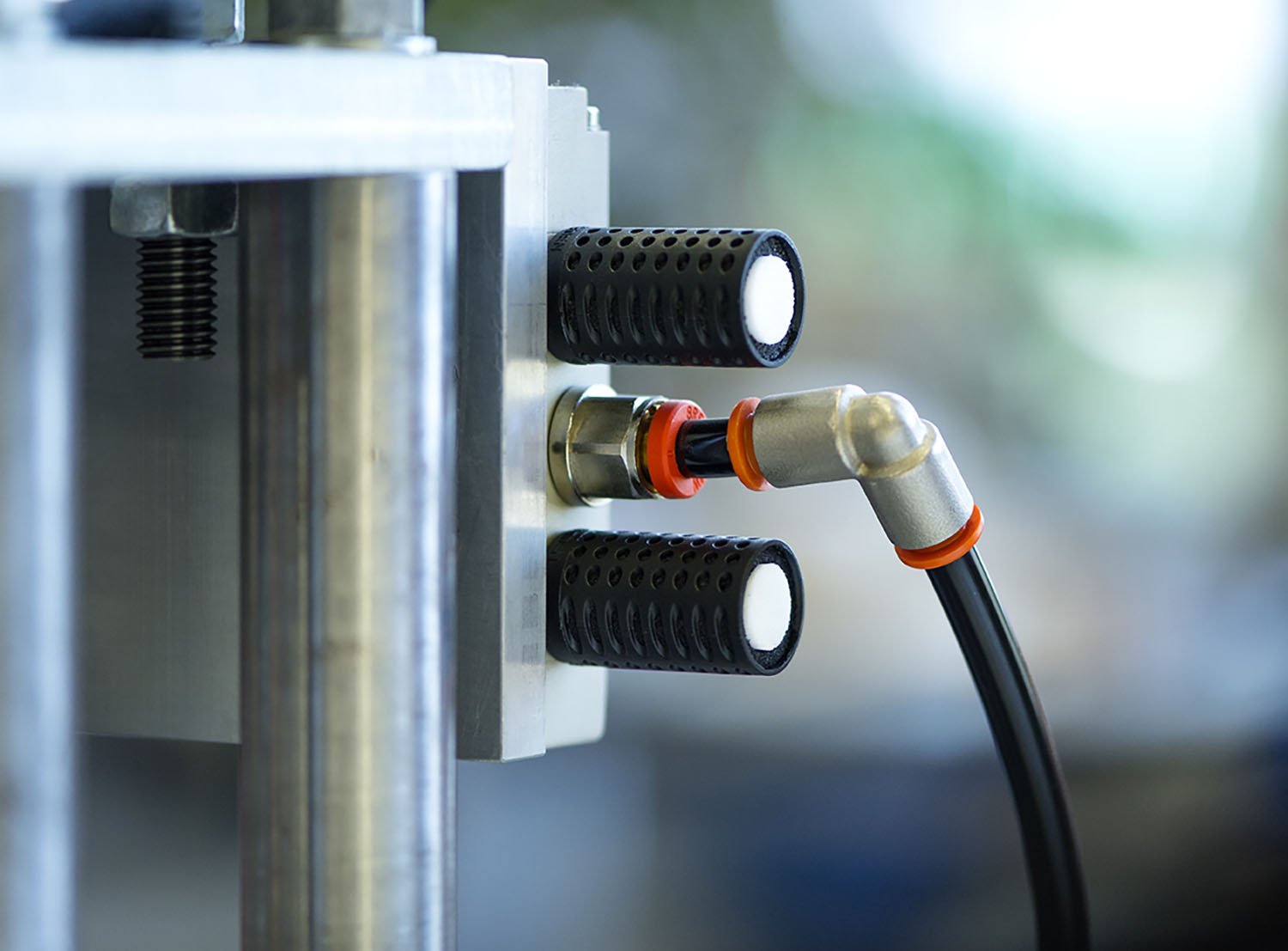Most people are unaware of the dangers related to blowing with compressed air. Knowing more about the risk of injury, and simple precautions to follow, will improve the safety for those who work with compressed air blowing on a daily basis.
The safety precautions are especially important with manual blowing, with air blow guns and compressed air. This is because the operator is close to the blowing application, which means that the risk of injury is bigger. Following are three truths about safety when blowing with compressed air. Everyone working in an industrial workplace should become familiar with these three truths, in order to minimize the risk of injury.
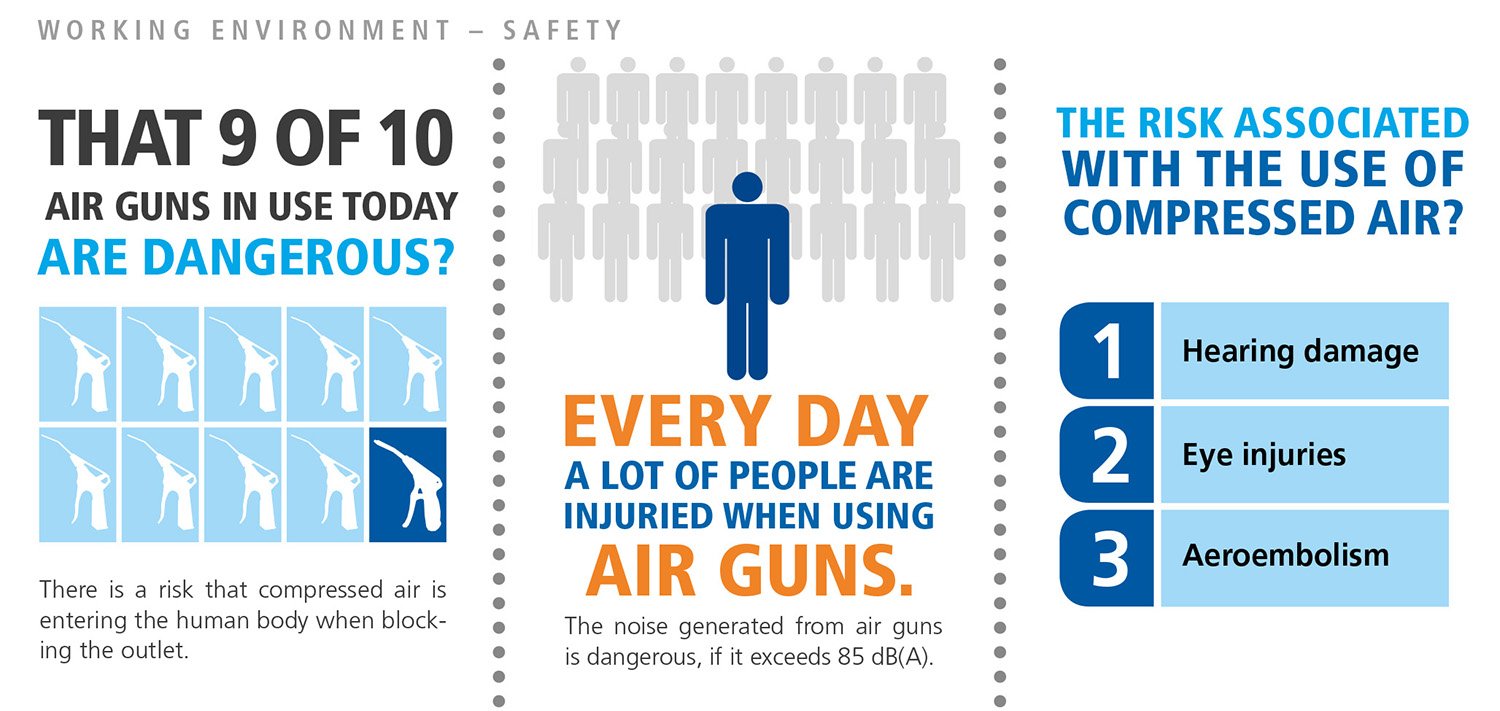
1. Did you know that 9 out of 10 air blow guns used today are dangerous?
Most of the air blow guns that are used in industry today have an open pipe opening, which means that the static pressure against the skin would be the same as the operating pressure if the opening would be blocked. The compressed air can then, if the operator by mistake blocks the opening with any body part, enter the body and go under the operators skin. This is called air embolism. This is a big danger for the operator, and can even result in death. Read more about how safe air blow guns can minimize the risk of air bubbles entering the blood stream.
2. Did you know that many people are injured everyday when operating air blow guns?
Blowing with compressed air can cause high sound levels. This happens when the compressed air is expanding out of the compressed air system and turbulence occurs in the air stream. High noise levels can cause hearing loss and even tinnitus. Read more about tinnitus or how it is possible to lower the sound level when blowing with compressed air.
3. Do you know which injuries are the most common when blowing with compressed air?
Except the risks mentioned above, air embolism and hearing loss, eye injuries are commonly mentioned when blowing with compressed air. Eye injuries are most common when cleaning with compressed air because chips and particles are bouncing back towards the operator. It is particularly important that the operator wears the correct personal protective equipment (PPE), since even small chips can cause serious eye injuries. Read more about eye injuries or learn more about the risks of blowing with compressed air.








